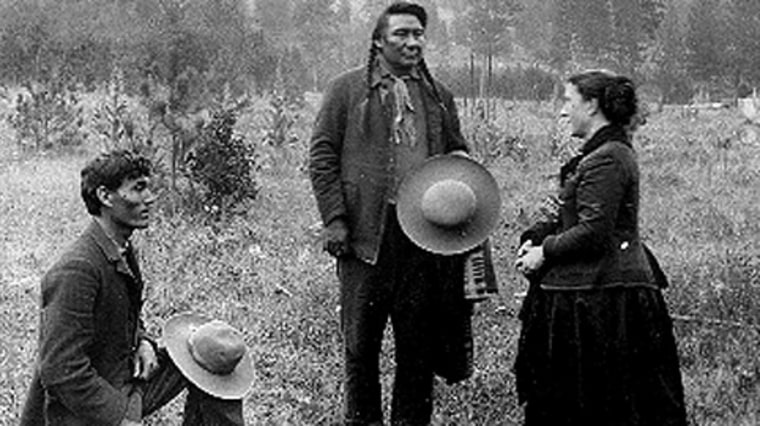The Black Hills, in North and South Dakota, along with 40 million more acres of Lakota land, were reclaimed by Congress in 1877 with a vote to repeal the 1868 Fort Laramie Treaty. The following year, Congress sent one of its first field teams to Zuni Pueblo in the Southwest as part of the newly created Bureau of Ethnology, whose mandate was to document the culture and society of Native Americans. Ethnologist Frank Hamilton Cushing, the leader of the team, became a member of the Zuni tribe, anticipating 20th century anthropological methods.
By 1883, a group of clergymen, government officials and social reformers calling itself “The Friends of the Indian” met in upstate New York to develop a strategy for bringing Indians into the mainstream of American life. Their decisions set the course for U.S. policy over the next generation and resulted in the near destruction of Native American culture.
After the Civil War, the 1870 census added mulatto, quadroon and octoroon. The purchase of Alaska from Russia in 1867 added Inuit, Kodiak and other Alaskan natives to the US population.
In 1870, the 15th amendment was ratified, prohibiting the denial of voting rights on the basis of race, which sought to guarantee black men the right to vote.
The practice of treating Indian tribes as sovereign nations was ended in 1871 when Congress approved the Indian Appropriations Act, which made them individuals and legally designated "wards" of the federal government.
In 1887, Congress passed the Dawes Severalty Act, which imposed a system of private land ownership on Native American tribes for whom communal land ownership had been a way of life. Individual Indians became eligible to receive land allotments of up to 160 acres, together with U.S. citizenship. When the allotment system finally ended, Indian landholdings were reduced from 138 million acres in 1887 to only 48 million acres by 1934. Under the Dawes Act, Congress adopted the “blood quantum” standard of one-half or more Indian blood to be “legally” declared Indian. Women were excluded. The standard was subsequently reduced to one-quarter, but the U.S. government continued to decertify Indian tribes, thus making it easier for whites to acquire Indian land.
U.S. troops killed 350 Sioux in the Wounded Knee Massacre in 1890.
More than 100,000 white settlers rushed into Oklahoma's Cherokee Outlet to claim six million acres of former Cherokee land in 1893.
When citizenship was offered to Native Americans in the Oklahoma Territory in 1890, only four individuals took advantage of the offer, and all of them were ostracized by their tribes for adopting the white man’s ways. So in 1901, Congress conferred U.S. citizenship on all Native Americans residing in the Territory, effectively removing the issue of choice in the matter.
700,000 acres of former tribal land was opened to white settlers in Washington, Idaho and Montana under the Dawes Act in 1909. The provisions of the Dawes Act continued to be used in ways which eroded tribal integrity until its repeal in 1934.
